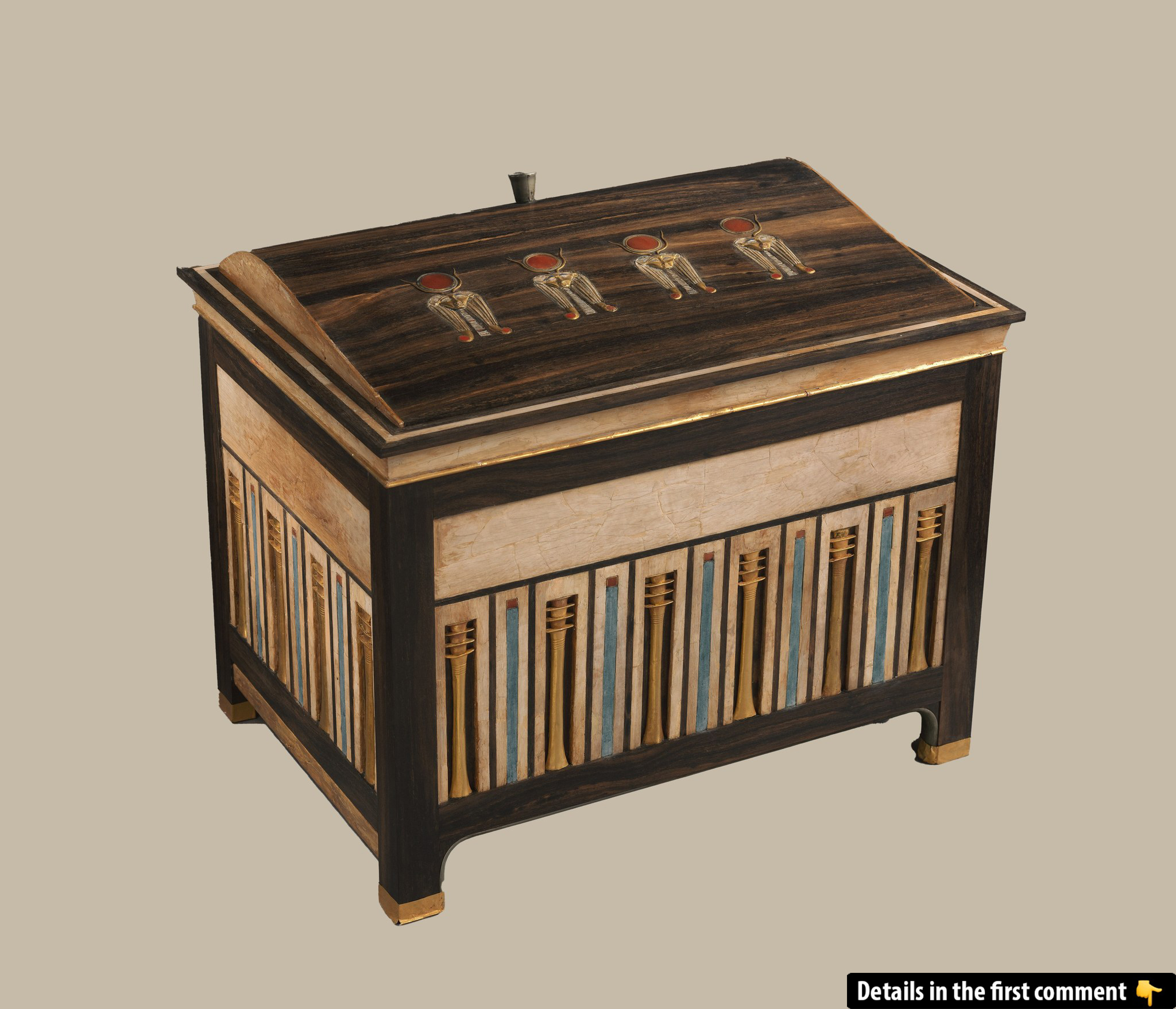Nestled within the prestigious halls of The Metropolitan Museum of Art lies an extraordinary piece of Ancient Egyptian history: the jewellery chest of Princess Sithathoryunet. A true masterpiece from the Middle Kingdom, crafted during the 12th Dynasty (c.1887–1813 B.C.), this treasure speaks volumes about the opulence and artistry of the time. Discovered in 1914, the chest was found in a concealed niche in Sithathoryunet’s tomb near the pyramid of Senwosret II at Lahun, Egypt, revealing an array of precious jewels and offering a fascinating glimpse into the lives of the royal elite during one of Egypt’s most prosperous eras.
The Jewellery Chest: A Glimpse into Royalty
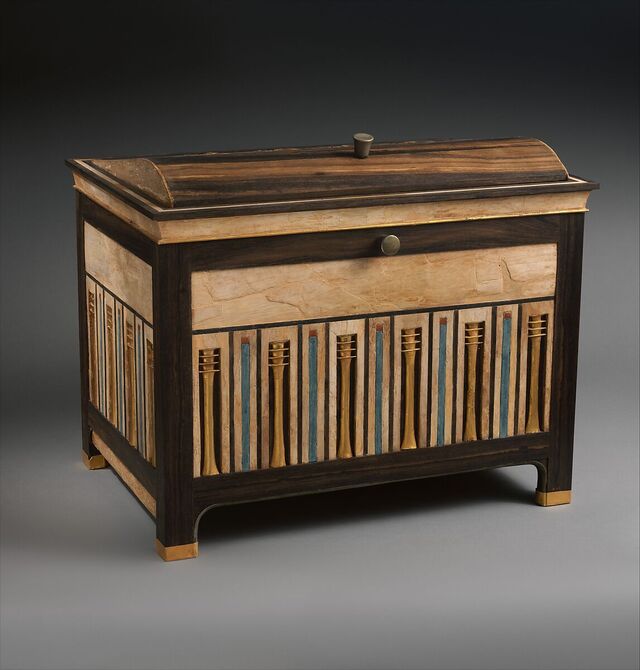
At first glance, the jewellery chest of Sithathoryunet is a modest yet commanding piece. Measuring 46 cm in length, 36.7 cm in height, and 32.5 cm in width, its size may not immediately overwhelm, but its exquisite craftsmanship certainly does. Constructed from rich ebony, the chest is adorned with ivory, gold, carnelian, blue faience, and silver. The materials alone speak to the wealth and status of its owner, a royal princess with access to the finest resources of her time.
The lid of the chest is intricately decorated with emblems dedicated to Hathor, the revered Egyptian goddess of love, beauty, and motherhood, symbolizing her divine protection over the precious contents inside. The sides of the chest feature gold Djed Pillars, symbols of stability, and a tribute to Osiris, the god of the afterlife. These artistic elements, both elegant and symbolic, speak to the cultural and religious practices of Ancient Egypt, where art and symbolism were intricately woven into daily life and the afterlife.
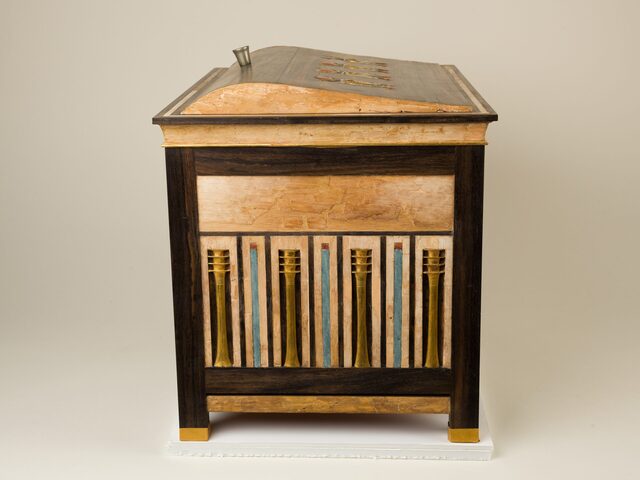
Video
Watch the video to discover how ancient jewelry connects us to vanished civilizations! Don’t miss this fascinating exploration of history through stunning artifacts.
Symbolism and Design
The jewellery chest is not only a storage container but also a symbol of divine protection and eternal stability. Hathor, the goddess represented on the chest, was one of the most prominent deities in Egyptian religion, associated with love, beauty, joy, and motherhood. The presence of her emblems on the chest suggests that the object was more than just a luxurious item—it was a spiritual safeguard for its owner and the precious jewels contained within.
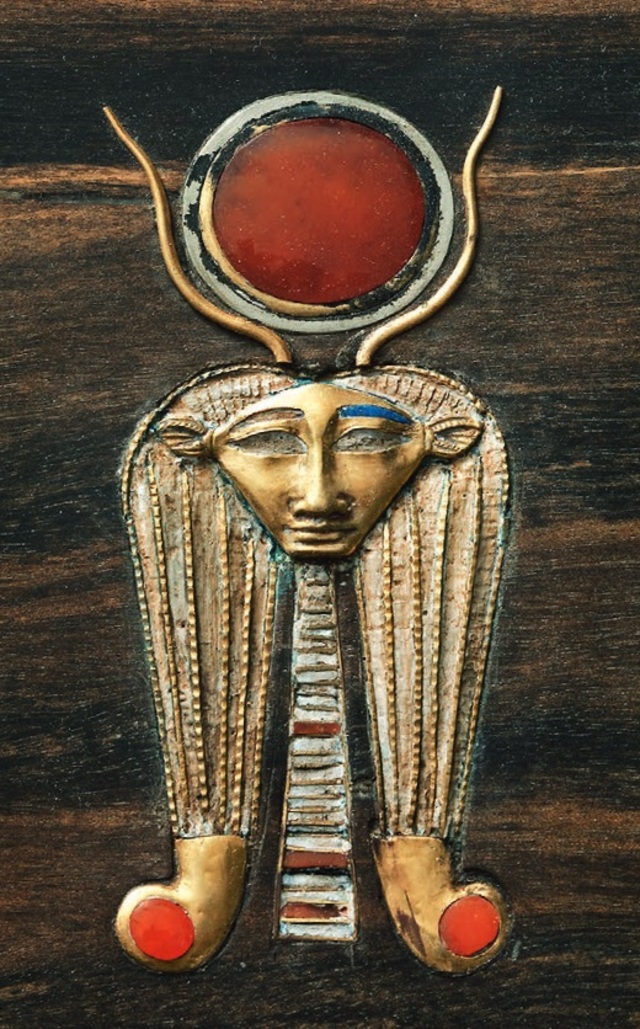
Furthermore, the Djed Pillars on the chest’s sides hold significant meaning. These pillars are symbols of Osiris, the god of the afterlife, and their presence reflects the Egyptian belief in the afterlife and the importance of ensuring the deceased’s journey to the afterlife was protected. In this case, the chest would have been a funerary offering, not just a display of wealth, but a spiritual tool to ensure Sithathoryunet’s safety and well-being in the afterlife.
The Legacy of Princess Sithathoryunet
While the jewellery chest speaks to the material wealth of Ancient Egypt, it also offers profound insights into the life of its owner, Princess Sithathoryunet. Her name, meaning “Daughter of Hathor of Dendera,” reflects her divine connection to Hathor, a goddess who was not only venerated but also considered a patroness of royal women. This divine connection underscores the esteemed status of Sithathoryunet, who was likely a daughter of Pharaoh Senwosret II.
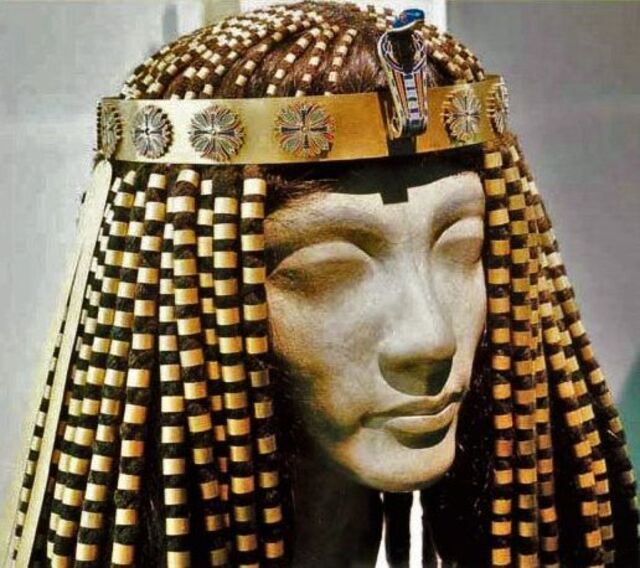
Though much of Sithathoryunet’s life remains a mystery, the treasures found in her tomb tell the story of a royal woman who enjoyed high status and the protection of the gods. Her jewellery, including pectorals, bracelets, and amulets made from gold, carnelian, lapis lazuli, and turquoise, demonstrate the sophistication and artistry of Middle Kingdom Egypt. These items were more than mere adornments; they were believed to offer divine protection and to accompany her on her journey into the afterlife.
Sithathoryunet’s Treasures: A Glimpse into Middle Kingdom Artistry
The jewellery chest is not the only remarkable object found in Sithathoryunet’s tomb. The extensive collection of jewellery and other artefacts discovered alongside her further illuminates the wealth, sophistication, and ceremonial practices of the time. Items such as pectorals, bracelets, and amulets, crafted from precious materials, underscore the artistry and technical skills of the Middle Kingdom artisans.
Each of these items is a testament to the high level of craftsmanship that defined the era, with intricate details and the use of materials that were both rare and luxurious. These objects not only signified the princess’s elevated rank but also the belief in the divine protection granted by the gods through these sacred adornments. The jewellery chest itself, with its careful construction and symbolic decoration, is a physical manifestation of the intersection between art, religion, and status in Ancient Egypt.
The Discovery of Sithathoryunet’s Tomb
The discovery of Sithathoryunet’s tomb was a momentous event in the history of Egyptology. In 1914, the renowned Egyptologist Flinders Petrie uncovered her tomb at el-Lahun, near the pyramid of Senwosret II. The tomb was a treasure trove of artefacts, including the jewellery chest, which spoke not only to the wealth and status of Sithathoryunet but also to the cultural and religious practices of Ancient Egypt.
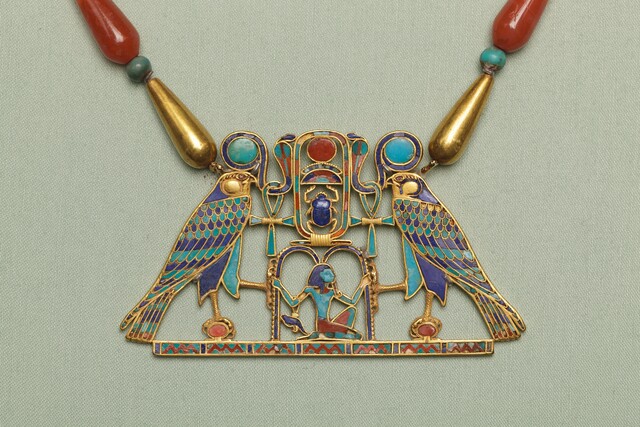
Flinders Petrie’s excavation marked a significant step in the study of Middle Kingdom Egypt, offering new insights into the lives of royal women and their roles in the afterlife. The discovery of this tomb, along with the accompanying artefacts, highlighted the importance of funerary practices in Egyptian culture, where treasures were not merely material possessions but were imbued with religious and symbolic significance.
The Enduring Legacy
Today, Sithathoryunet’s jewellery chest stands as a symbol of the enduring legacy of Ancient Egypt. The chest, now housed at The Metropolitan Museum of Art, continues to captivate audiences with its beauty and historical significance. It serves as a reminder of the richness of Ancient Egyptian culture, where art, religion, and power were intricately intertwined.
The jewellery chest of Sithathoryunet invites us to reflect on the lives of those who lived thousands of years ago. Through this remarkable artefact, we gain a glimpse into the world of Egypt’s royal elite and the spiritual beliefs that governed their lives and afterlives. The chest is not only a testament to the artistry of the time but also to the lasting influence of Egyptian culture and the way it continues to resonate in modern times.
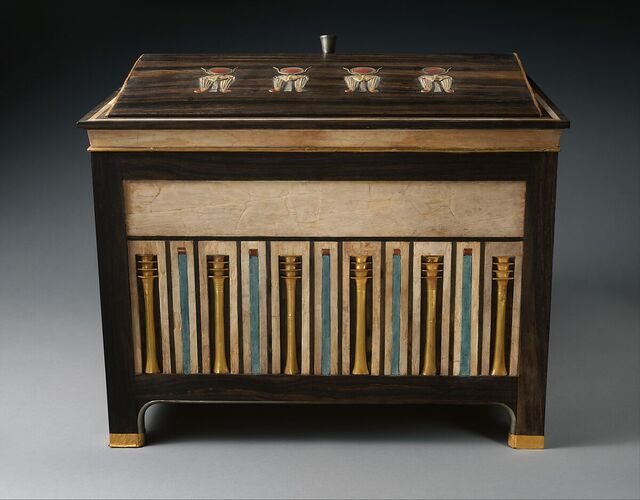
Video
Watch the video for a relaxing documentary on the clothes, jewelry, and fashion of ancient Egyptians! Don’t miss this soothing exploration of their timeless style.
Conclusion: An Artifact of Timeless Splendour
In conclusion, the jewellery chest of Princess Sithathoryunet is not only a testament to the wealth and artistry of Ancient Egypt but also a profound symbol of the spiritual and cultural values of the Middle Kingdom. Through its intricate design and symbolic emblems, it offers a glimpse into the royal world of Egypt, where divine protection and ceremonial practices were paramount. As an enduring symbol of Egypt’s ancient splendour, the jewellery chest continues to inspire awe and fascination, standing as a timeless reminder of the grandeur and sophistication of one of history’s most influential civilizations.
